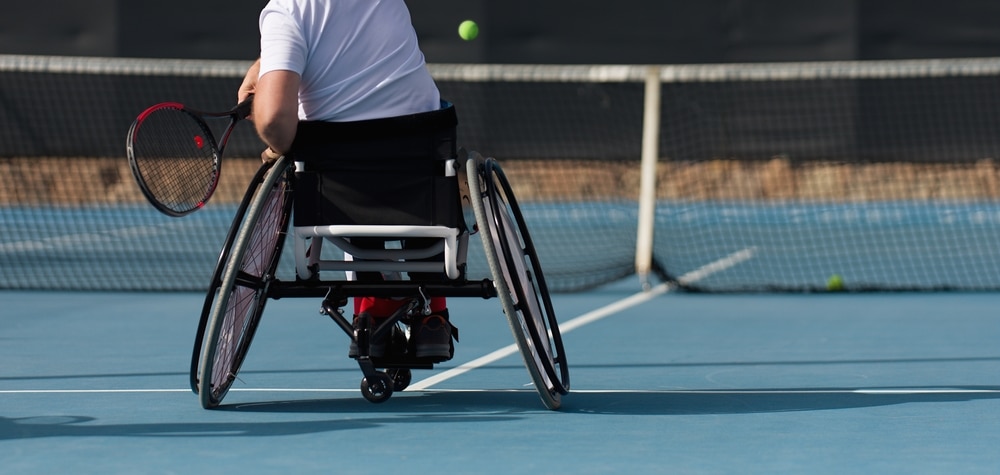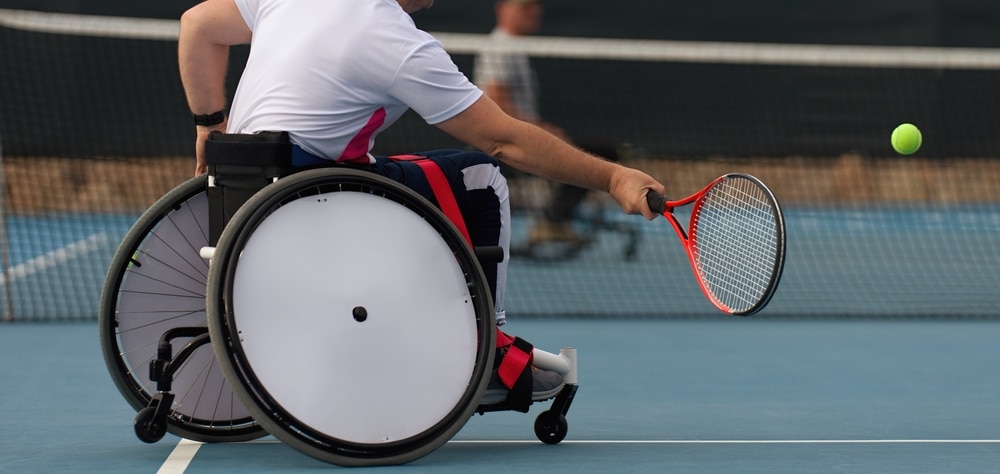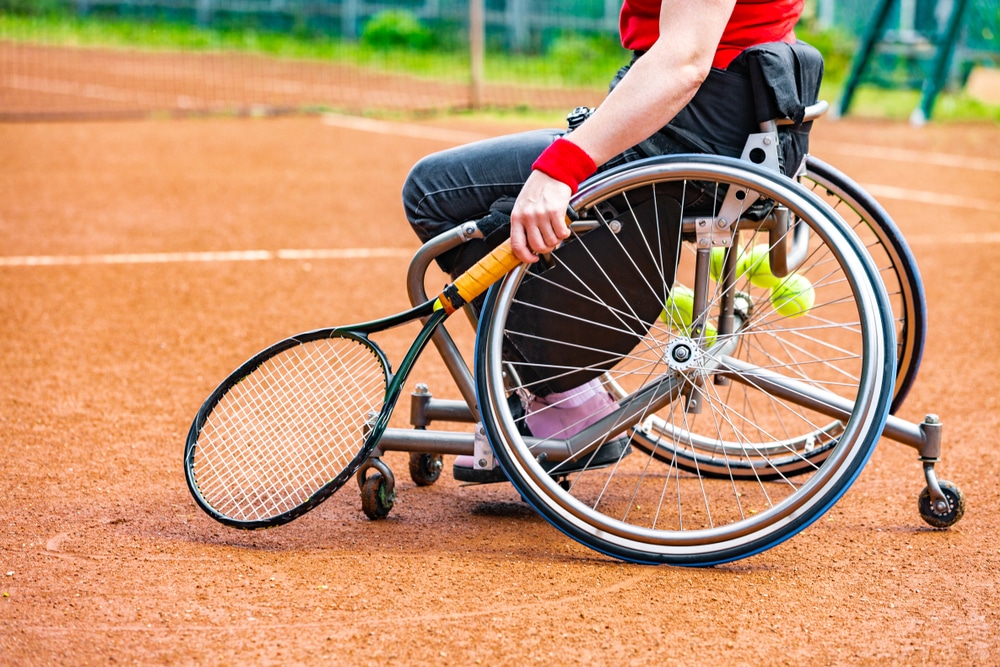Table of Contents
The bounce of a tennis ball on the court carries a message of strength, hope, and determination. Wheelchair tennis isn’t just a sport. It’s proof that challenges can turn into achievements. For players who face physical difficulties, this game is more than a competition—it’s a celebration of what’s possible and a reminder that passion knows no limits.From beginners trying the sport for the first time to skilled players aiming for big titles, wheelchair tennis welcomes everyone. It’s a place where effort shines brighter than obstacles, and every serve shows that the game belongs to all. Welcome to Game on Wheels, where tennis is for everyone, no matter their abilities.
Introduction to Wheelchair tennis
Greetings from the thrilling realm of wheelchair tennis, where the limits of athleticism, skill, and willpower are continuously pushed to new heights. People with physical disabilities compete in this exciting sport, showing off their skills, breaking down barriers, and embracing the inclusive tennis community.
Wheelchair tennis has developed into a distinct sport with its obstacles and victories, not just a modified version of its more conventional counterpart. Players turn the court into a stage where they display incredible agility, accuracy, and strategic prowess, enthralling spectators across the globe with their amazing feats of skill.
The players’ unwavering spirit is the essence of wheelchair tennis. These athletes have overcome their physical disabilities to succeed in a sport requiring mental and physical toughness through pure willpower and endurance. Every game exhibits tenacity as they move across the court elegantly and hit their racquets with force and accuracy.
Rules of Wheelchair Tennis
Wheelchair tennis adapts traditional tennis with modifications to ensure inclusivity while maintaining the original game’s spirit and rules. Court dimensions and net height remain unchanged, but specialized equipment plays a vital role. Sports wheelchairs, equipped with anti-tip wheels for stability and straps for security, allow agile movement. Standard tennis balls are used, with gameplay adjustments for wheelchair dynamics. Players combine precision ball handling with strategic shot placement, showcasing the sport’s challenges and competitive nature. Wheelchair tennis exemplifies versatility and inclusivity, enabling athletes of all abilities to enjoy the thrill of the game while fostering equality on the court.
Scoring
Wheelchair tennis follows standard scoring rules with minor adaptations for players’ disabilities. Matches typically consist of the best of three or five sets, with points scored using terms like “love,” “15,” “30,” and “40.” Players aim to place shots within the court’s lines, showcasing tactical skill and precision. Agile and highly skilled, athletes maneuver gracefully, executing powerful strokes while maintaining balance. Intense matches captivate fans with thrilling rallies, highlighting the players’ strength, speed, and strategy. Wheelchair tennis embodies athleticism, resilience, and competitive spirit, proving the game’s accessibility and the incredible talent of its players.
Movement and Positioning
Mobility and placement are critical in wheelchair tennis, shaping the game’s dynamics. Unlike traditional tennis, players use specialized wheelchairs, relying on upper body strength and precise control instead of footwork. Strategic positioning is key, requiring players to anticipate ball bounces and opponents’ actions, adjusting quickly to stay competitive. Effective wheelchair maneuvering compensates for lower-body limitations, enabling agility and court coverage. Beyond mobility, players must deliver accurate, powerful strokes while maintaining balance and composure. This blend of strategy, strength, and adaptability underscores the unique challenges and skills involved in mastering wheelchair tennis.
Serving
The serve in wheelchair tennis is vital, requiring precision, strategy, and adherence to the bounce rule, which mandates the ball lands in the opponent’s service box before bouncing twice. Players combine physicality and accuracy, pushing their wheelchairs to deliver powerful, well-placed serves. Quad players, despite limited upper-body function, showcase remarkable skill and adaptability, timing their propulsion and ball contact flawlessly. A well-executed serve not only starts the point but also sets the game’s pace, offering tactical control and positioning players for success. This blend of athleticism and technique highlights the serve’s significance in wheelchair tennis.
Equipment and Adaptations
Sports wheelchairs
Tennis wheelchairs, a mainstay of the Paralympic Games, have allowed people like Brad Parks to flourish because wheelchairs have completely changed the sports environment. Sports wheelchairs are carefully designed to enable players to perform their best on the court. Their lightweight frames allow them to move quickly and with the necessary speed. Athletes can move rapidly and precisely over the court thanks to the wide rear wheels, which are essential for propulsion.
These sports wheelchairs are known for their skill in stopping or turning like a ball. Due to unique features built into their design, athletes can quickly change course or stop with grace, which is crucial for strategic gameplay. In addition to improving mobility, these modifications also guarantee safety. Anti-tip systems balance the wheelchair during vigorous motions, preventing accidents.
For sportsmen, comfort is of the utmost importance, and sports wheelchairs are designed to meet this need. Personalized seat and backrest arrangements offer the comfort and support needed to endure the demands of demanding gameplay. The painstaking attention to detail demonstrates the dedication to enabling athletes to reach their full potential.
Wheelchair tennis is a sport in which innovative and athletic wheelchairs are monuments to human creativity and perseverance. This union of innovation and athleticism enriches the landscape of adaptive sports and inspires future generations.
Racquets
Racquets made especially for wheelchair tennis players are tailored to their specific court requirements. Although these racquets are based on the conventional tennis racquet design, they are modified to provide wheelchair-bound players with the best possible performance. Because of their lightweight and nimble design, they enable players to shoot with power and accuracy even when seated.
Wheelchair tennis players are incredibly fast and graceful as they move inside the court’s bounds. They skillfully move across the court with their modified racquets, laying strokes carefully to outplay opponents. These athletes compete at the top levels of the sport, demonstrating remarkable ability and agility despite the difficulties posed by movement limitations.
Additionally, the game depends heavily on the selection of tennis balls. Tennis balls made especially for wheelchair tennis players are used because they offer constant bounce and responsiveness across various surfaces. These specialty balls improve the entire level of play by helping players make strokes with confidence and accuracy.
Essentially, wheelchair tennis players compete with skill and dedication using customized tennis balls and adapted racquets, captivating spectators worldwide with their athleticism and love of the sport.
Benefits of Wheelchair Tennis
Physical and mental fitness
Wheelchair tennis redefines adaptive sports by promoting inclusivity, offering physical and mental benefits, and fostering community. This sport enhances cardiovascular health, muscle strength, and coordination while boosting flexibility and endurance. Mentally, players sharpen cognitive skills and resilience through strategic gameplay. Beyond the court, wheelchair tennis creates supportive networks and lifelong connections. It also serves as a platform for activism, challenging stereotypes and advocating inclusivity. More than recreation, wheelchair tennis exemplifies adaptability and inspires individuals to overcome challenges, embodying the human spirit’s resilience. Its transformative impact transcends sports, encouraging personal growth and societal change.
Skill development
Wheelchair tennis combines physical ability and mental sharpness, fostering a wide range of skills. Navigating the court, predicting ball trajectories, and making accurate shots demand coordination, focus, and strategic thinking. Adaptability is key, as players adjust to court conditions, weather, and opponents, building resilience and problem-solving skills that extend beyond the sport.
This game showcases human creativity, offering a platform for athletes to overcome obstacles and redefine possibilities, inspiring many with their dedication and perseverance. More than a sport, wheelchair tennis empowers players, challenging them physically and mentally while fostering personal growth and self-discovery.
Conclusion
In conclusion, wheelchair tennis stands as a testament to human resilience, turning physical limitations into extraordinary achievements. It goes beyond being a sport; it’s a celebration of strength, passion, and perseverance, where every serve and rally embodies determination and hope. The inclusive nature of the game ensures that anyone, regardless of ability, can participate and thrive, making it a powerful reminder that challenges are meant to be overcome. With its unique combination of skill, strategy, and athleticism, wheelchair tennis continues to inspire athletes and audiences alike, proving that passion and drive truly know no bounds. Game on Wheels is more than just a slogan—it’s a movement that invites everyone to be part of the game.






